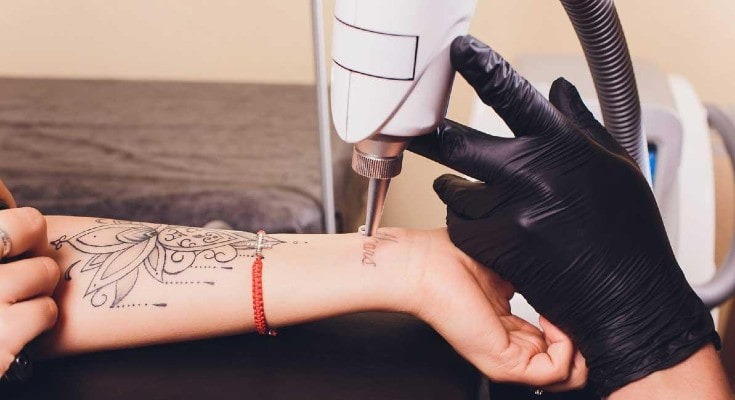-
17 January 2022
How Skin Type Affects Tattoo Removal

People with unwanted tattoos often wish that they could rub them off and end their misery. It is not easy to take the ink out once it has been placed in the deepest layers of the skin. Only laser tattoo removal Melbourne can provide the best results without any side effects. Thus, most people consider the treatment to get rid of the artwork on their bodies that they have come to despise.
However, before jumping on the bandwagon, you need to know that tattoo removal is a lengthy process that requires several sessions. The duration of the process is dependent on the colour, size, age, and location of the tattoo. Besides these, the skin type also plays a significant part in determining the length of the procedure. Let us understand how skin type affects the treatment.
During the procedure, a laser beam is directed on the tattoo, and it is attracted to the pigment in ink. It is easier for the laser to detect the ink and break it into tiny particles with lighter skin. However, if the skin tone is darker and resembles the colour of the ink, it can become challenging for the laser system to differentiate between the two.
Thus, you need to find an expert practitioner who has access to advanced laser systems that can remove ink from any skin tone. The professionals examine the skin tone and determine the right wavelength that can be used to remove the ink.
Different ink colours and skin tones reflect the differing wavelengths of light in their own unique manner. Therefore, the practitioner must adjust the wavelength to target different ink colours.
This is the reason why multi-coloured tattoos are difficult to remove and take more time than single colour tattoos. Since a lighter skin tone has less melanin, it becomes easier for the laser to remove the ink. Consequently, the duration of the removal gets reduced for lighter skin tones, and it increases for people with darker skin tones.
According to the Fitzpatrick Scale, there are six types of skin tones. Type 1 is the lightest and is sensitive to sunlight and gets easily sunburnt but is not tanned. On the other hand, Type 6 on the scale is the darkest skin tone that does not get sunburnt but gets tanned quickly.
The scale displays the reaction of different skin tones towards the UV radiations from the sun. Laser technicians and practitioners determine the wavelength that can be used on different skin tones based on the scale as it informs them about the reaction of the skin type after being exposed to heat.
Thus, with darker skin tones with a high melanin concentration, the procedure becomes complicated. Melanin absorbs heat, which means that dark skin will absorb a lot of heat that is generated from the laser.
The practitioner must be extremely cautious while using the laser beam and ensure that it is not used for too long or with high-intensity settings that can cause burning. Therefore, you need to pick the skin clinic after a thorough evaluation of the experience and expertise of the practitioner. The lower laser settings used for darker skin tones increase the treatment time, while those with lighter skin can get results faster.
With advanced laser systems, it is possible to get the ink removed completely from darker skin tones. It is safe when performed by a qualified and experienced practitioner. However, it is not possible to remove all the different ink colours from dark skin. The black ink can be easily removed, but red, green, blue, and purple can only be faded.
The safety of the patient is of utmost importance during the procedure. Thus, they should understand that overworking the laser will not remove the lighter colours from darker skin. Any interference with the treatment can lead to scarring, hyperpigmentation, or hypopigmentation.
So, you must follow the advice of the practitioner before and after the sessions and get the best results. During laser tattoo removal on dark skin, some of the heat can be diffused to the skin because of the presence of more melanin. Thus, a laser beam with a broad spectrum of light is used to remove ink, which does not burn skin.
So, make sure that the skin clinic you choose is using the latest Q-Switched ND:YAG laser system for tattoo removal because it protects the surrounding skin and selectively targets the ink.
However, the treatment takes longer because of the lower settings and the long wait between two sessions. Usually, practitioners suggest waiting for six weeks for people with light skin tones. However, people with darker skin need to wait for eight to ten weeks to avoid any side effects and allow the skin to heal perfectly.
Thus, if you are considering undergoing laser tattoo removal in Melbourne, you must consult a dermatologist to understand your skin type on the Fitzpatrick Scale and identify the best laser skin clinic that will suit your needs.